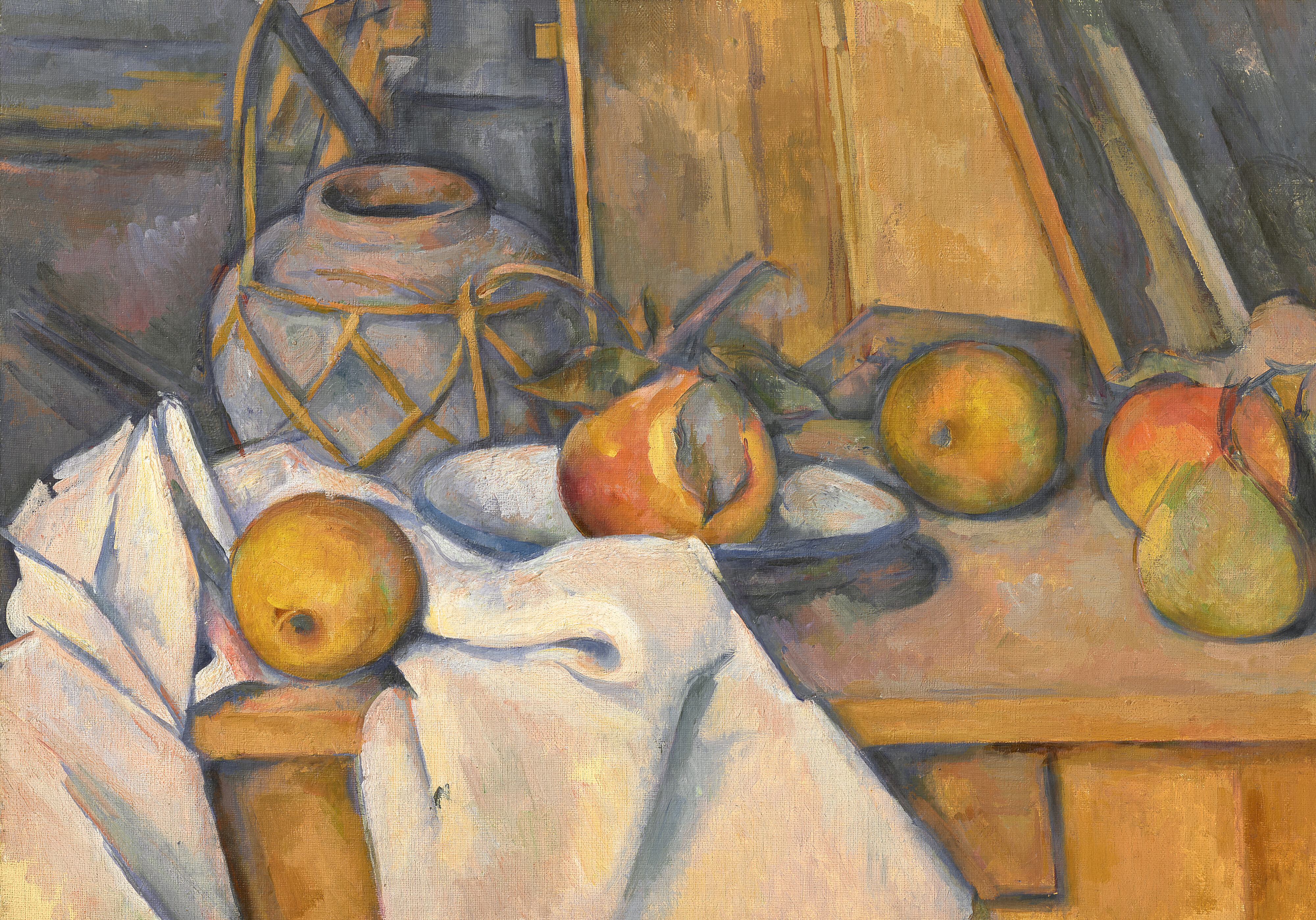News:
Swiss Museum Reaches Last-Minute Restitution Agreement Over Cézanne Painting Headed to Christie’s
By Daniel Cassady

Cezanne,Fruits et pot de gingembre
Museum Langmatt announced last month that it would be selling up to three Paul Cézanne masterworks in its collection at Christie’s upcoming 20th Century evening sale in New York in November. But, on Monday, the museum said that presale provenance research found evidence that the sale’s star lot Fruits et pot de gingembre (1890-1893) may have been sold to the institution under duress.
The Baden, Switzerland-based institution said it has since reached out to the heirs of Jacob Goldschmidt, a Jewish art dealer who jointly acquired the painting in 1929, and reached a restitution settlement agreement with the assistance of Christie’s. The terms of the agreement were not announced, but the painting carries an estimate of between $35 and $55 million.
Dr. Sidney Brown, father of the Langmatt’s founder, John Alfred Brown, purchased Fruits et pot de gingembre in 1933 from its then-owners, Goldschmidt’s Galerie M. Goldschmidt & Co in Frankfurt and the Lucerne-based L’Art Moderne, which was an affiliate of the Paris-based Bernheim-Jeune gallery.
However, according to the museum, Goldschmidt’s life and livelihood were under constant threat after Adolf Hitler and the Nazi party took power in 1933. In April of that year, the Nazi party instituted a boycott of Jewish-owned businesses. In 1934, after the Nazi Party banned Jews from joining the German Labor Front, effectively making it impossible for Jews to find work in the private sector, Goldschmidt was no longer able to work as an art dealer. Like many Jews who were encouraged to leave Germany in the 1930s, Goldschmidt was forced to pay an exorbitant emigration tax, known as the Reich Flight Tax, when he fled Germany in 1936. According to the Centre for Economic Policy Research, the effective emigration tax rate that year was 85.8 percent.
Until recently, there was no suspicion that Fruits et pot de gingembre was purchased under duress, and there was no mention of the possibility of a restitution claim when Christie’s announced the sale in late September. The document calling the masterwork’s provenance into question surfaced after Christie’s announced the sale, according to the museum.
“It wasn’t until very late in the process, as it often is, that a piece of evidence came up that made us think best course of action was to approach the heirs,” a spokesperson for the Langmatt told ARTNews.
“While the historical documents are unclear, the context was obvious,” Langmatt director Markus Stegmann told ARTNews. “Goldschmidt wasn’t able to operate as he normally would have in years prior. While there may not for certain be a case for restitution, the Foundation Langmatt and the museum thought the most respectful way to move forward with the sale was to locate the heirs and, with Christie’s, reach an amicable solution.”
The museum said the settlement was reached “in the last few days” and the sale will move ahead as planned. In a statement, Christie’s said they were “committed to the vital research which informs our cataloguing process, with the goal of ensuring the fullest possible access to provenance information for the property in our auctions,” and thanked Foundation Langmatt and the heirs of Jacob Goldschmidt “for their committed collaboration, engagement and consideration in this matter.”
Fruits et pot de gingembre is one of three Cézanne paintings the museum is selling at Christie’s so that the Foundation Langmatt can raise $45 million to bolster its endowment fund. According to Christie’s, the works will be sold in order, Fruits et pot de gingembre (estimate: $35 million-$55 million), Quatre pommes et un couteau (1885, estimate: $7 million – $10 million), and La mer à l’Estaque (1878-1879, $3 million–$5 million) until the total bid reaches or surpasses $45 million, at which point any works that remain will be withdrawn and returned to the museum.
Apart from raising the ire of the International Council of Museums (ICOM)—the president of the Swiss branch of the coalition called the prospective sale “outrageous” and a flagrant disregarding of ICOM’s deaccessioning rules—the sale has drawn fire for the Museum Langmatt’s tenuous connection to the Nazi Party via the electrical engineering company Brown, Boveri & Cie (BBC). Founded in 1990, the Museum Langmatt consists the Brown family home, Villa Langmatt, and the art collection Sidney W. and Jenny Brown. Their son, John Alfred Brown, bequeathed the home and art collection to the city of Baden in his will. Sidney, whose brother Charles Eugene Lancelot Brown founded BBC in 1891, worked as a technical for the company in Baden, and retired in 1935. During World War II, a Mannheim, Germany-based BBC subsidiary engaged in forced labor, including slave labor from concentration camps, to expand its operations.
While Sidney W. Brown did own shares in BBC that passed on to his children after his death in 1941, a spokesperson for the museum told ARTNews that the Brown family’s investment in the company during the war was minimal. At the time, the family’s shares were worth about CHF 75,000, while BBC had an overall nominal share value of CHF 30 million, or about one quarter of one percent of the company.
According to the museum’s website “in 1988, BBC merged with the Swedish company ASEA to form ABB Ltd. In 2000, ABB, as well as many other Swiss industrial companies, settled all claims for use of forced labor during World War II.”


